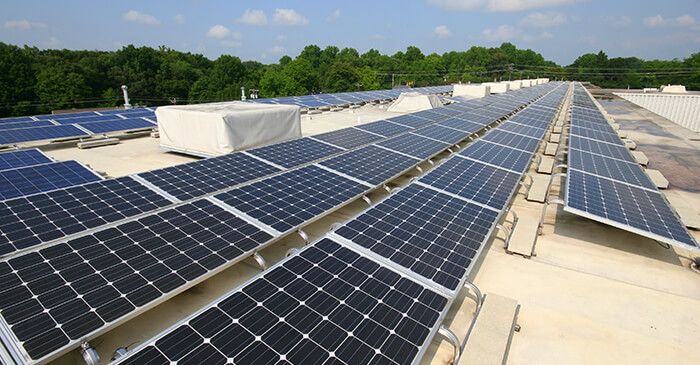When considering Commercial Solar Costs, keep in mind that you may receive tax credits or other financial incentives for your installation. Considering the size of your system, the number of panels and other components of the system will also affect the cost of your solar installation. Let us discuss these considerations to help you choose the best solar solution for your business. After reading this article, you should be better informed about Commercial Solar Costs. And if you have any questions or concerns, feel free to ask them.
Tax credits
If you’re considering a commercial solar project, you may be wondering if you’ll qualify for the federal tax credits available. The federal government’s incentive program is designed to reduce energy costs, and it offers a variety of benefits to commercial solar customers. In addition to saving you money on your electricity bills, a solar panel installation can reduce your reliance on the power grid. To learn more about the commercial solar incentives available, read on to learn more.
First, you may qualify for federal tax credits for commercial solar systems. You can claim a 26 percent tax credit for the purchase and installation of solar panels for commercial buildings. This credit is available until 2022 and has no cap value. The savings from installing solar panels on a commercial building can be significant. Depending on the size of your commercial property, you could save thousands of dollars over the next few years. However, it’s best to act now and get as much information as you can before committing to a solar installation.
Financial incentives
The federal government offers a tax credit to offset the initial costs of solar installations. Called the Investment Tax Credit, it allows the taxpayer to claim up to 26% of the cost of solar installations on their federal income taxes. An average rooftop solar installation costs about $20,000, and most homeowners receive about $5,000 in tax credits at tax time. There are some exceptions, though. For example, homeowners in some states may be eligible for special incentives.
For businesses and other businesses that plan to install solar, financial incentives are an important consideration. Commercial solar professionals should understand the various incentives available and how they work to reduce customer costs without cutting into their profit margins. By understanding how solar incentives work, they can help their customers save money while still being competitive with their competitors. These incentives are available only to customers who purchase solar installations from certified installers. For more information, visit the U.S. Department of Energy’s website.
Size of system
Commercial solar systems come in many sizes, with the typical 30-100 kW model being ideal for medium-sized offices and clubs. However, there are a few things to consider when choosing the size of a commercial solar system. A solar system over 100 kW can be beneficial for larger buildings, but they also come with additional complexities. It is important to speak with a commercial solar specialist about your building’s specific needs before making a decision.
When planning a commercial solar system, consider how much power you need to generate. The amount of power produced will depend on how much sun your building receives. Then, you’ll need to think about how your system will be placed to receive as much sun as possible. Consider whether your building is shaded, which will limit its ability to collect sunlight. It will also depend on how efficient the system is, as a larger system will be more effective in generating power.
Size of panels
Depending on the location of your solar installation, the size of your solar panels can vary considerably. The most common size for residential applications is about 65 square feet, while larger panels can take up more than a square foot of roof space. Standard solar panels are typically between 23o and 275 watts DC. High-efficiency panels, such as those manufactured by SunPower, can be found in the range of 327 to 345 watts.
A six-kilowatt installation can consist of 20 solar modules weighing a total of 800 pounds. This is a total weight of 2.2 pounds per square foot. Mounting hardware can add three to four pounds to the overall weight of the installation. Commercial solar panels are typically much larger than residential solar panels. The weight is often weighed down to as little as 40 pounds per square foot. Typically, a solar panel with this size of power weighs over 50 pounds per square foot, but this is not the case for the largest panels.
Price of panels
The price of commercial solar panels is higher than those of residential panels, mainly because they require specialized equipment and materials. As solar energy becomes more widespread, the price of commercial solar panels should fall in the next few years. New software, such as PV Watts, allows anyone to calculate the cost of installing solar panels on their own property. There are several factors to consider, including the size of the solar system, geographic location, and the number of panels to be installed.
The average cost of a 150 to 300-watt solar panel is $112 to $450, depending on the manufacturer and model. The cost per watt varies widely; the average for a 150-watt solar panel is about $0.75 per watt. Homeowners and businesses generally spend $1 per watt, but the average commercial solar panel costs between $550 and $600. The cost of installing commercial solar panels can be further reduced by utilizing federal incentives. Currently, federal tax credits are worth up to 26% of the solar system’s cost. However, after 2024, this credit will decrease to 10% and the state tax credit will decrease to just under half.



